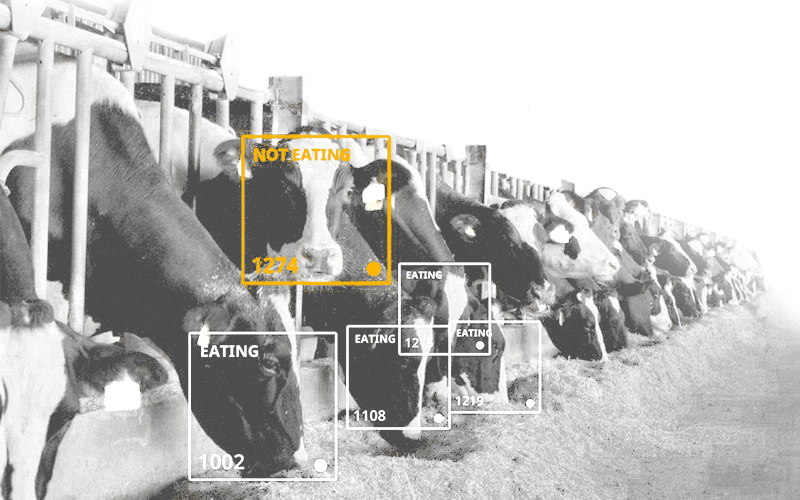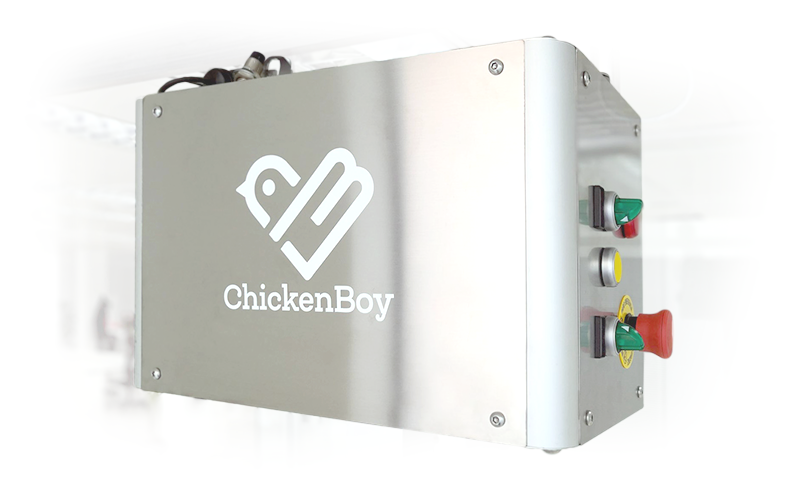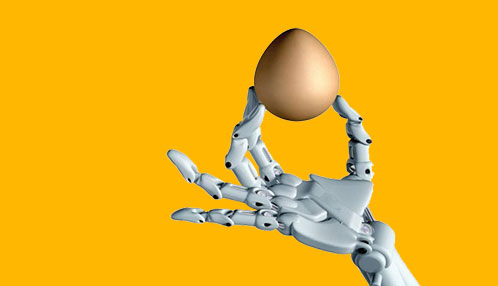ROBOTS IN ANIMAL HUSBANDRY
Agriculture is a strategically important sector of the world’s economy. Farmers need to produce even more food for the growing global population while keeping product quality high. Innovations, like robots, help farmers to achieve these goals. This article provides a few examples of the most impressive modern technologies in animal husbandry.
Dairy cattle:

The idea of a milking robot emerged over 100 years ago. Gustaf de Laval, an engineer from Sweden, patented the first milking equipment in 1894. And 30 years ago, in 1992, a Danish company Lely presented Lely Astronaut, the first fully automatic milking system. This technology was considered a revolution in dairy production. A few years ago, the plants were equipped with milk quality control and cow health monitoring technologies.
Another interesting technology is a tracker for cows which is somewhat similar to human fitness watches. The process is as follows:

First, they measure the number of steps and chewing activity and send alarm signals in case of any behavioral problems. Next, each cow is given a unique responder on its neck strap, ensuring individual monitoring of each animal. There are clever calculators that are installed in the software to compose the best ratio for each cow. Lastly, there are drones that monitor large pastures, and can quickly detect the lost animals and turn them back. The agricultural industry is the largest purchaser of drones, with nearly 80% of commercial drones.
In addition, dairy producers also use automatic hoof washers, lighting systems, robots for cleaning the manure, and automatic brushes to clean cows and make them a massage. Everything to make the cows feel happy and healthy!

Robots in poultry:
Biosecurity is one of the most critical issues in poultry production. Keeping certain humidity and temperature levels and taking sanitary measures are vital for preventing disease outbreaks. Robot cleaners wash and clean the territory. They are also capable of airing and turning the litter in poultry barns. All these measures help to keep the level of ammonia gases under control.
Many farms are switching to keeping layers on the floor rather than in cages to make them feel more comfortable. However, hens often lay eggs randomly on the floor, not in unique baskets for eggs. Specifically, a robot moves along the barn and gently urges birds to change their position. Thus, birds are not standing still. It is better for their physical condition and reduces the risk of accidental egg-laying. Still, if hens have laid eggs on the floor, a special robot will come and help to collect all of them!
A ChickenBoy system is positioned on the ceiling and monitors the situation in the barn. It can detect ill and inactive birds, abnormal behavior, excessively wet litter, etc. Farmers are tracking the process on a PC screen.

Robots in the swine industry:

Non-invasive weighting determines a pigs’ weight remotely. The technology uses pig photos and deep neural networks. Farmers do not need to catch a pig and physically move it to a scale for weighting. As a result, pigs feel less stressed.
And lastly, there are unique cameras fixed on tripods that automatically count the number of heads. The devices are equipped with sensors detecting pigs’ movement so that it does not matter to one animal twice. Smart cameras also track pig behavior and send signals in case of abnormalities or injuries.
To sum up, let’s consider which benefits and challenges can be offered by modern technologies.
Advantages of using robots:

1.) Technologies save time by taking up long-lasting routine cleaning or head counting tasks.
2.) Saving time, in its turn, helps to save labor hours and money.
3.) Elimination of human factors minimizes the risk of mistakes.
4.) Minimization of human contact with animals reduces the risk of disease outbreaks.
5.) All this, in its turn, increases the quality of final products purchased by consumers.
6.) Last but not least important is that modern technologies improve animal welfare. Animals have more freedom, are cared for, feel less stressed, and are healthier.
Disadvantages of using robots:

1.) Concerns that a technical failure in an automated system might lead to a significant disruption of production processes.
2.) Robots are costly. Their maintenance is expensive too. Some farms cannot afford it.
3.) Farms have to spend time and money to train specialists who will be managing robotic equipment.
4.) When robots perform most tasks, many people in the countryside will be jobless.
Still, robots in agriculture promise significant prospects in sector development, sustainable production, and increasing product quality despite potential challenges. We’ll keep tracking the technology development, and hope that we will share another article about new, more amazing technologies in a couple of years.
Meanwhile, if you are interested in surveying agricultural technologies, feel free to contact us at info@bazisgroup.comand we will be happy to assist you.
Sources
https://agsolarsolutions.com/best-new-poultry-farm-equipment-2019/
https://www.poultryhub.org/all-about-poultry/husbandry-management/robotics-in-the-poultry-industry
https://www.canadianpoultrymag.com/rise-of-the-robots-30876/
https://en.wikipedia.org/wiki/DeLaval
https://www.seametrics.com/blog/drones-farming/
https://milknews.ru/longridy/roboty-idut-moloko.html
